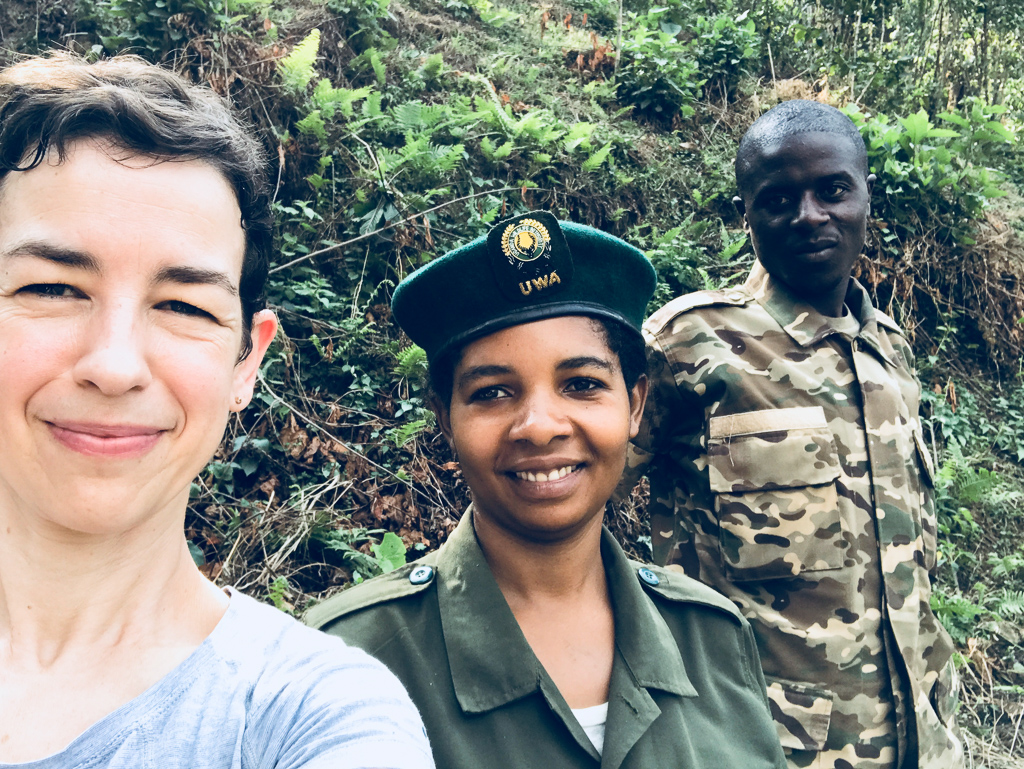
Shannon McFarlin with Vastine Tindimwebwa and Chance Joseph of the Uganda Wildlife Authority in the Bwindi Impenetrable National Park hiking to locate a mountain gorilla burial.
By Shannon McFarlin, The George Washington University
Among our closest living relatives, gorillas occupy environments across central Africa characterized by considerable altitudinal and habitat diversity, with a corresponding variation in feeding ecology, social behavior, and life history even among populations of the same subspecies. Our Leakey Foundation research focuses on mountain gorillas, an eastern gorilla subspecies found in two discontinuous, ecologically distinct populations that have been the focus of long-term observational study: the Virunga volcanoes of Rwanda, Uganda and DR Congo, and Bwindi Impenetrable National Park, Uganda. Bwindi and Virunga gorillas differ considerably in behavior and life history. Yet, potential differences in body size and morphological development are poorly known, despite the fundamental importance of these traits for feeding ecology, energetics, locomotion, competition, and life history. Naturally accumulated skeletons from these populations can offer new opportunities to test hypotheses about the morphology, life history, and behavioral ecology of these and other wild apes, as well as new insights into the evolutionary history of our own lineage.
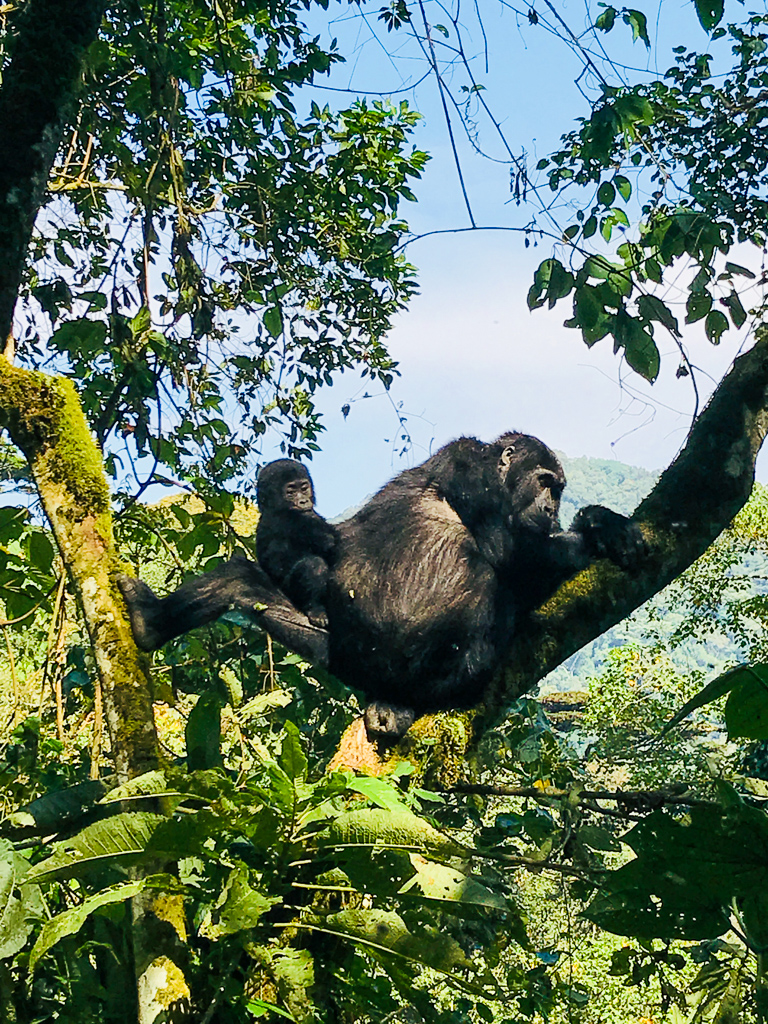
Bwindi mountain gorillas eat more fruit and spend more time in trees than Virunga mountain gorillas. The two populations also show differences in life history.
With a 2008 grant from The Leakey Foundation, we initiated the Mountain Gorilla Skeletal Project in Rwanda – a collaboration between scientists and veterinarians from the Rwanda Development Board’s Department of Tourism and Conservation, The George Washington University, Dian Fossey Gorilla Fund International, Gorilla Doctors, Institute of National Museums of Rwanda, and New York University College of Dentistry – to assist the national parks authority in recovering the naturally-accumulated skeletons of Virunga mountain gorillas from Volcanoes National Park, and build local capacity for their long term curation for scientific study and education. After working with our partners to establish protocols for maximizing the recovery of mountain gorilla skeletons after their deaths, Rwanda’s collection of mountain gorilla skeletons now includes at least 160 individuals. 60% represent individually-known gorillas followed during life, monitored by the Karisoke Research Center for research or by the national parks authority for tourism purposes.
More recently in 2017, with a grant from The Leakey Foundation and a new partnership between the Uganda Wildlife Authority, Institute of Tropical Forest Conservation, The George Washington University, Gorilla Doctors, and Max Planck Institute for Evolutionary Anthropology, we are now expanding this effort to recover accumulated skeletons of mountain gorillas from Bwindi Impenetrable National Park in Uganda. Still in the early stages of this project, we work in small teams of national parks staff, veterinarians, and researchers to locate and excavate the skeletal remains of mountain gorillas that had previously undergone postmortem exams after their natural deaths, followed by burial in the forest. This isn’t an easy task – some burials were conducted over a decade ago, and the dense forest vegetation covers their surfaces today. We often have GPS coordinates to help guide our way to these burial sites. But in every case our success is dependent upon the recollections of field staff who were present at the time these burials were conducted, and their extensive knowledge of the forest. Remarkably, despite the difficult terrain, we’ve been able to locate most burials we’ve searched for thus far.
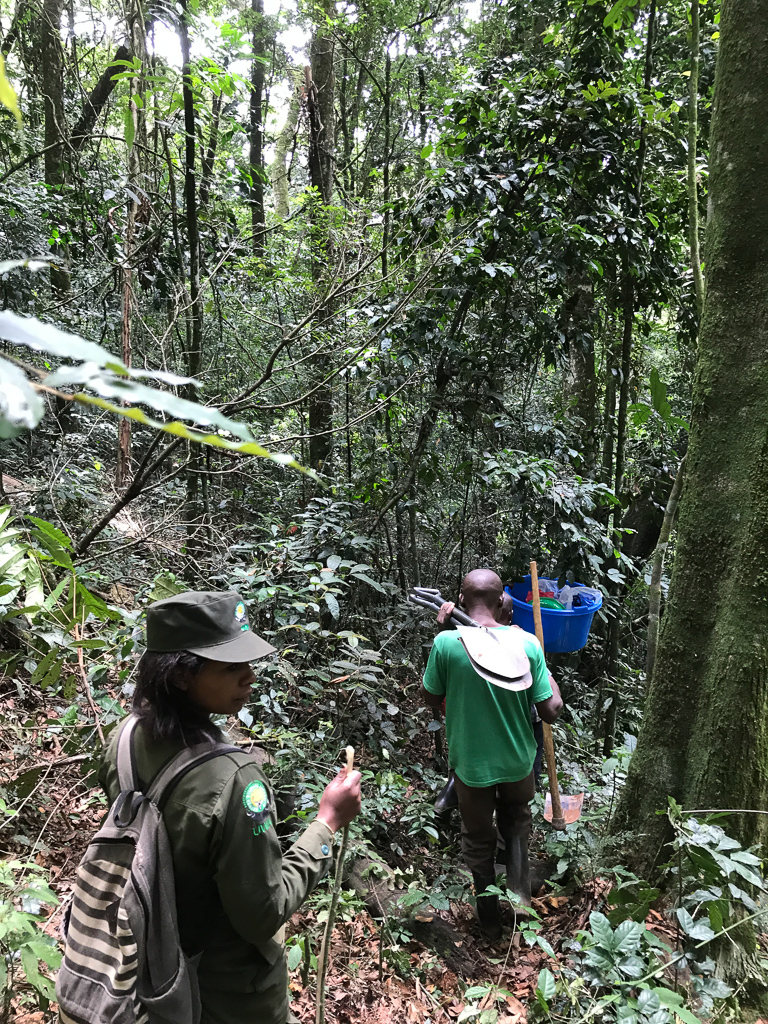
Hiking into Bwindi Impenetrable National Park to locate a mountain gorilla burial. With Vastine Tindimwebwa and Chance Joseph, Uganda Wildlife Authority
Over just two short field seasons to date, we have catalogued the skeletal remains of 21 mountain gorillas from Bwindi. Of these, nine are represented by mostly complete skeletons our team has excavated from the northern sectors of the forest; all but one of these gorillas were derived from habituated groups monitored for tourism and/or research. As Bwindi mountain gorillas are nearly absent from museum skeletal collections elsewhere, Uganda’s collection is unique not only for its associated datasets but also its provenance. The collection also includes cercopithecine and colobine monkeys, chimpanzees, and other mammalian species recovered from the forest. This week, we look forward to returning to Uganda to continue skeletal excavations from mountain gorilla burial sites in the southern sectors of the park.
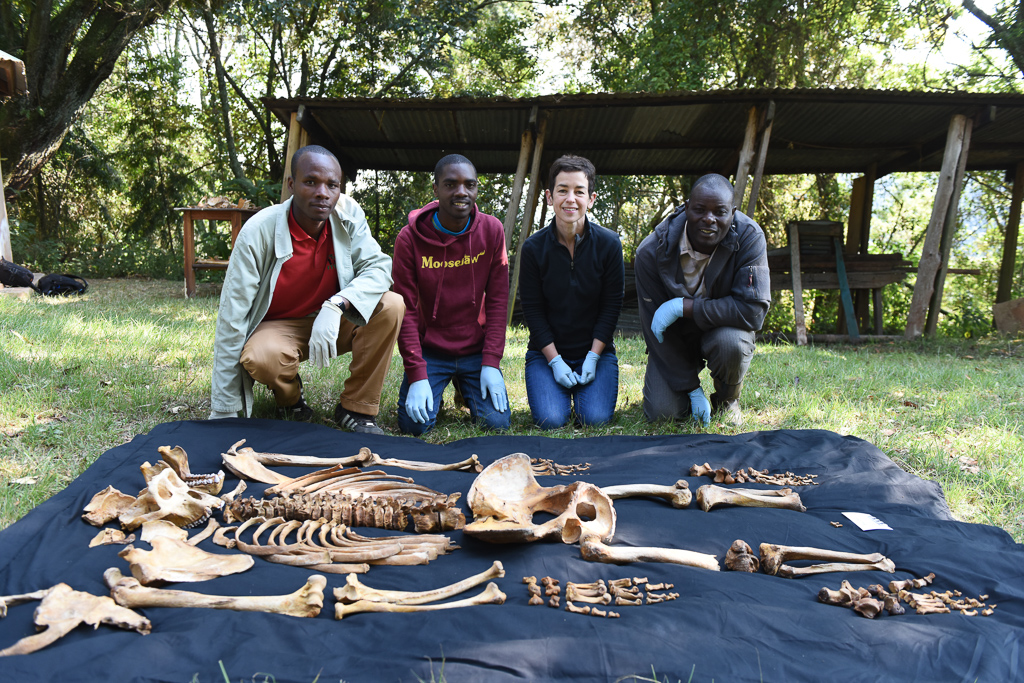
Inventorying mountain gorilla skeletons after excavation. With Aventino Nkwasibwe (ITFC), Emmanuel Tibenda (ITFC), and Matthias Banchukura (MPI).
After their excavation from the forest, these skeletons are transported back to the Institute of Tropical Forest Conservation, where they are managed in partnership with the Uganda Wildlife Authority. Here, the skeletons are accessioned, cleaned, labeled, and laid out for a detailed inventory, before being curated for study. As part of this process, our team also collects three-dimensional scans of the crania, mandible, and select other elements, for archival purposes and to support morphological studies. Linear bone measurements, dental impressions and development status, and other observations are also collected for ongoing studies of mountain gorilla developmental life history, aging and health.
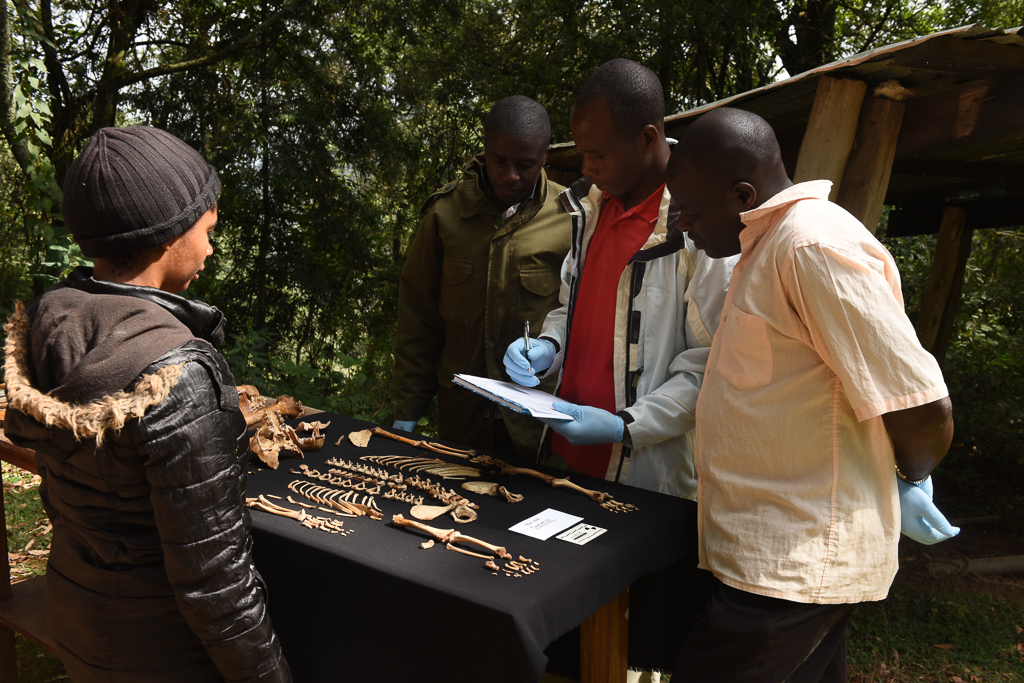
Inventorying mountain gorilla skeletons after excavation. With Vastine Tindimwebwa (UWA), Chance Joseph (UWA), Aventino Nkwasibwe (ITFC), Emmanuel Tibenda (ITFC).
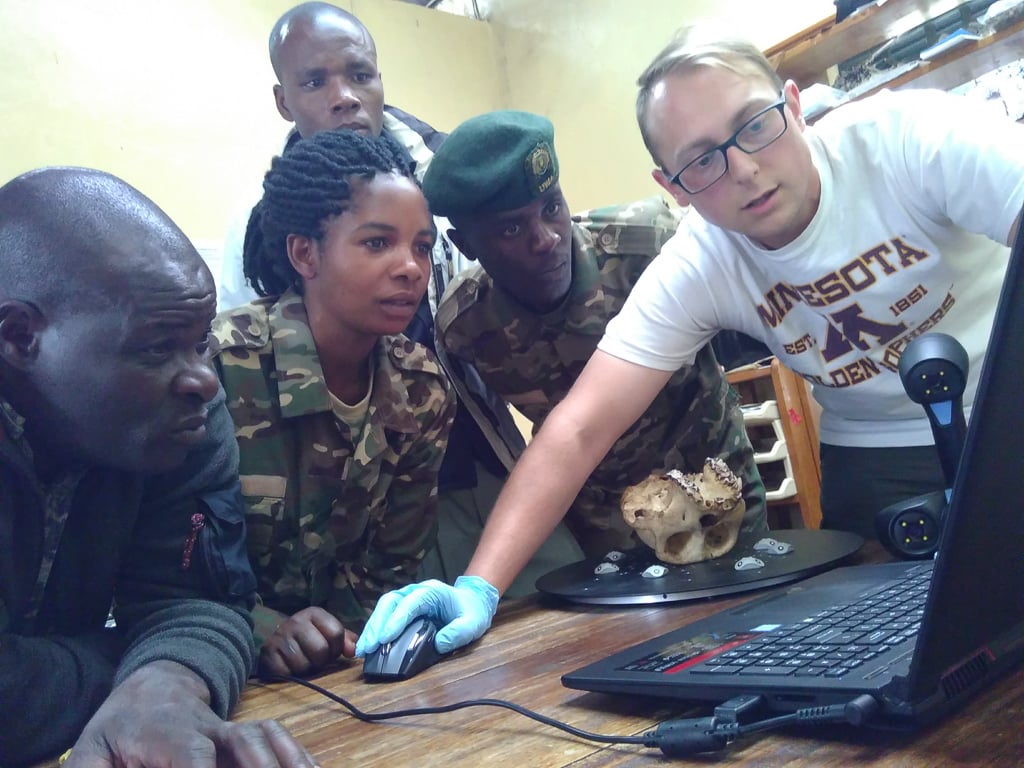
Collecting 3D scans of gorilla specimens. With Emmanuel Tibenda (ITFC), Vastine Tindimwebwa (UWA), Aventino Nkwasibwe (ITFC), Chance Joseph (UWA), and Jason Massey (U Minnesota)
Skeletal studies by our team are already revealing differences in functional morphology, dental ecology and aging between Bwindi and Virunga mountain gorillas, which are associated with differences in behavior. The next stage of our analyses will examine aspects of skeletal and dental growth and development between Bwindi and Virunga gorillas; these two populations may be expected to differ in body size and maturational timing given other observed differences in their life history and diet. Given the associated ‘living’ datasets with these skeletal collections, they offer a unique opportunity to bridge life history investigations of our closest living relatives today with the approaches that we use to investigate life history in the past, and in so doing, significantly advance our understanding of the fossil evidence of life history evolution in our own lineage.
About the author: Dr. McFarlin is a biological anthropologist whose research focuses on understanding the significance of bone and tooth microanatomy for revealing aspects of the growth and development, life history, behavior, and environments of primates and other organisms. She is the recipient of several Leakey Foundation research grants, including a grant in 2017 for her project entitled, “Skeletal recovery and research of Bwindi mountain gorillas, Uganda.”
Acknowledgments: We thank the governments of Uganda and Rwanda for permission to conduct this research. This project would not be possible without the infrastructural support and tireless efforts of field staff from our partner institutions in Uganda, including the Uganda Wildlife Authority, Institute of Tropical Forest Conservation, Gorilla Doctors, and Max Planck Institute for Evolutionary Anthropology; our partners in Rwanda, including the Rwanda Development Board’s Department of Tourism and Conservation, Dian Fossey Gorilla Fund International, Gorilla Doctors, and Institute of National Museums; and community members who have shared their knowledge of the forest. We also thank our core partners and contributing researchers from The George Washington University, University of Oulu, New York College of Dentistry, Smithsonian Institution, and University of Minnesota, and the many students and scientists from these and other institutions in Uganda, Rwanda, and elsewhere who have contributed to this effort. In addition to The Leakey Foundation, we also thank other agencies who have supported this work in Rwanda and Uganda, including the National Geographic Society Committee for Research and Exploration (8486-08), The Wenner Gren Foundation, National Science Foundation (BCS 0852866, 0964944, 1520221, 1753651), The George Washington University (to S. McFarlin), 2010 Max Planck Research Award (to T. Bromage) administered by the Max Planck Society and the Alexander von Humboldt Foundation, and Nordenskiöld-samfundet (to J-A Junno).


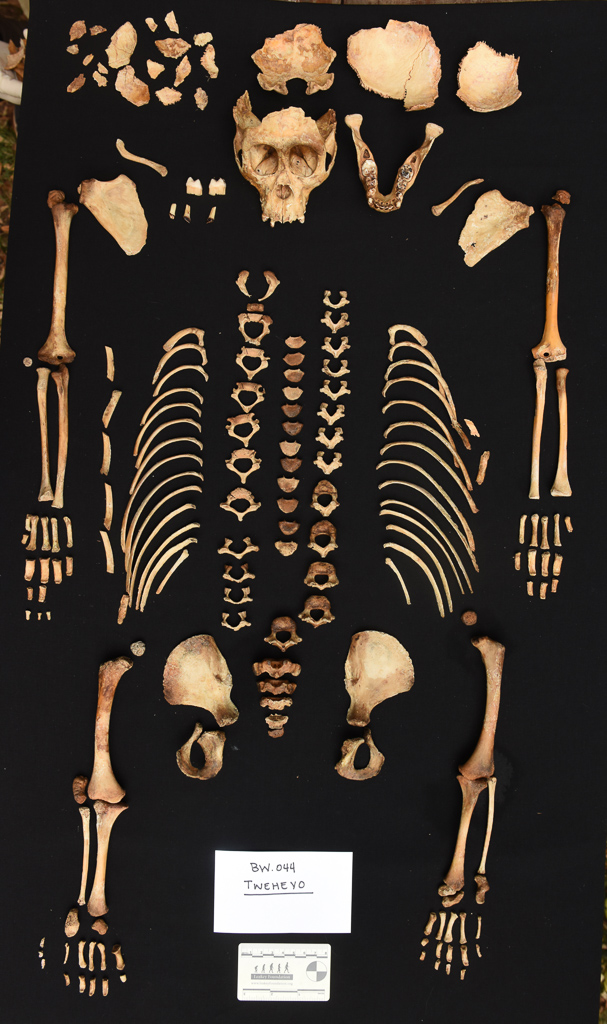
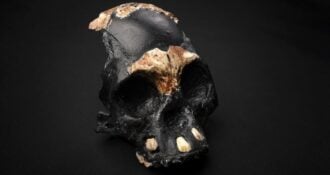
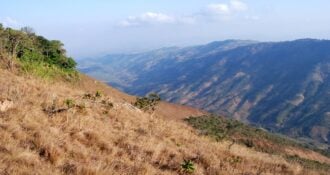
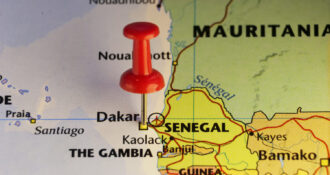

Comments 0